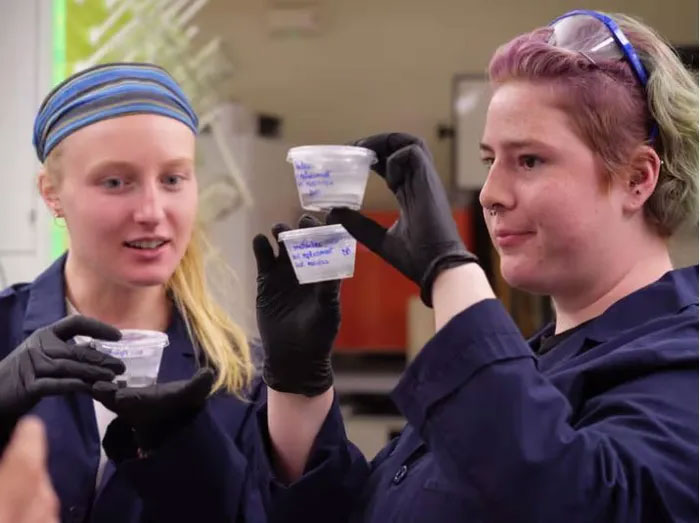Cement plays an essential role in global construction, contributing approximately 7% of annual greenhouse gas emissions due to its carbon-intensive production process. Scientists at the University of Colorado Boulder have discovered a more environmentally friendly approach using a type of microalgae that naturally produces limestone particles through photosynthesis, potentially transforming buildings into carbon reservoirs.
Limestone is a key component of cement, but incorporating it into the mix consumes a significant amount of energy. First, it must be extracted from the earth, then crushed, heated at extremely high temperatures, and processed, which involves burning large amounts of fossil fuels and results in the release of stored carbon. The researchers are pursuing a more sustainable method by replacing limestone with clay or volcanic rock that has been discarded.

Students working on carbon-neutral cement using biological limestone at the University of Colorado Boulder.
Materials scientist Wil Srubar was inspired by the natural structures formed by calcium carbonate in coral reefs. He wondered if this natural process could be harnessed to produce materials in a more environmentally friendly way, leading him and his team to a type of microalgae known as coccolithophores.
These tiny organisms naturally sequester and store carbon dioxide through photosynthesis, using sunlight and seawater to convert it into calcium carbonate at a faster rate than coral reefs. They thrive in warm, cold, saline, and freshwater environments, signaling good potential for global cultivation.
Srubar stated: “On the surface, they produce very complex calcium carbonate shells, essentially a limestone armor surrounding the cells.”
The research team utilized the coccolithophores to produce biological limestone, which can replace mined limestone to create concrete with significantly lower environmental impact. Srubar noted that these materials “look, feel, and perform exactly like concrete,” but the cement used to create it is pure carbon-neutral or even carbon-negative, where the carbon dioxide emissions involved are less than the amount sequestered by the microalgae. “For the industry, now is the time to tackle this very dire issue. We believe we have one of the best solutions for the cement and concrete industry to address its carbon problem,” Srubar emphasized.


















































